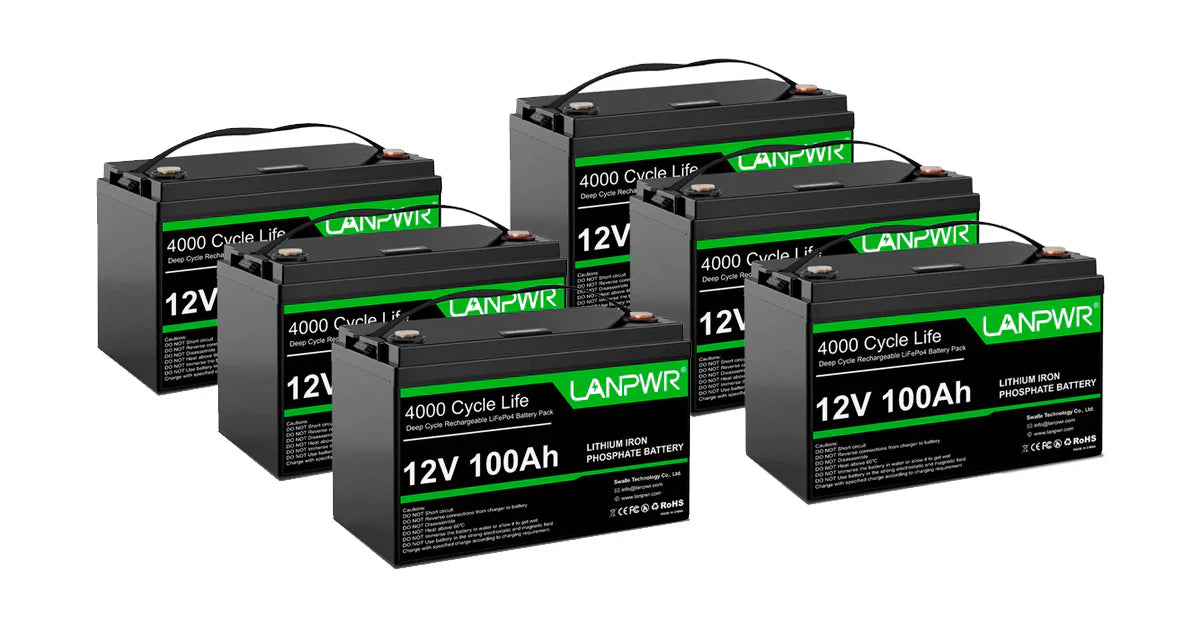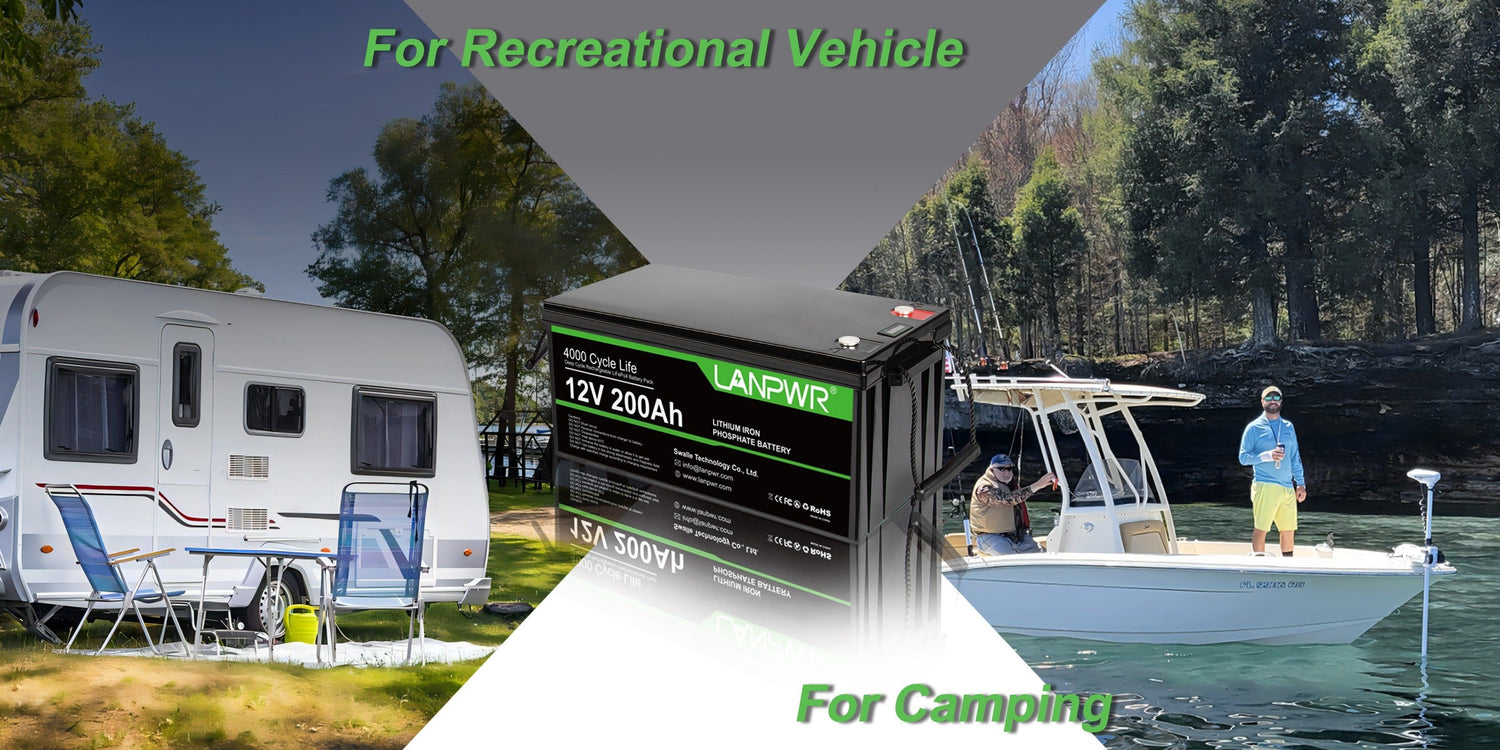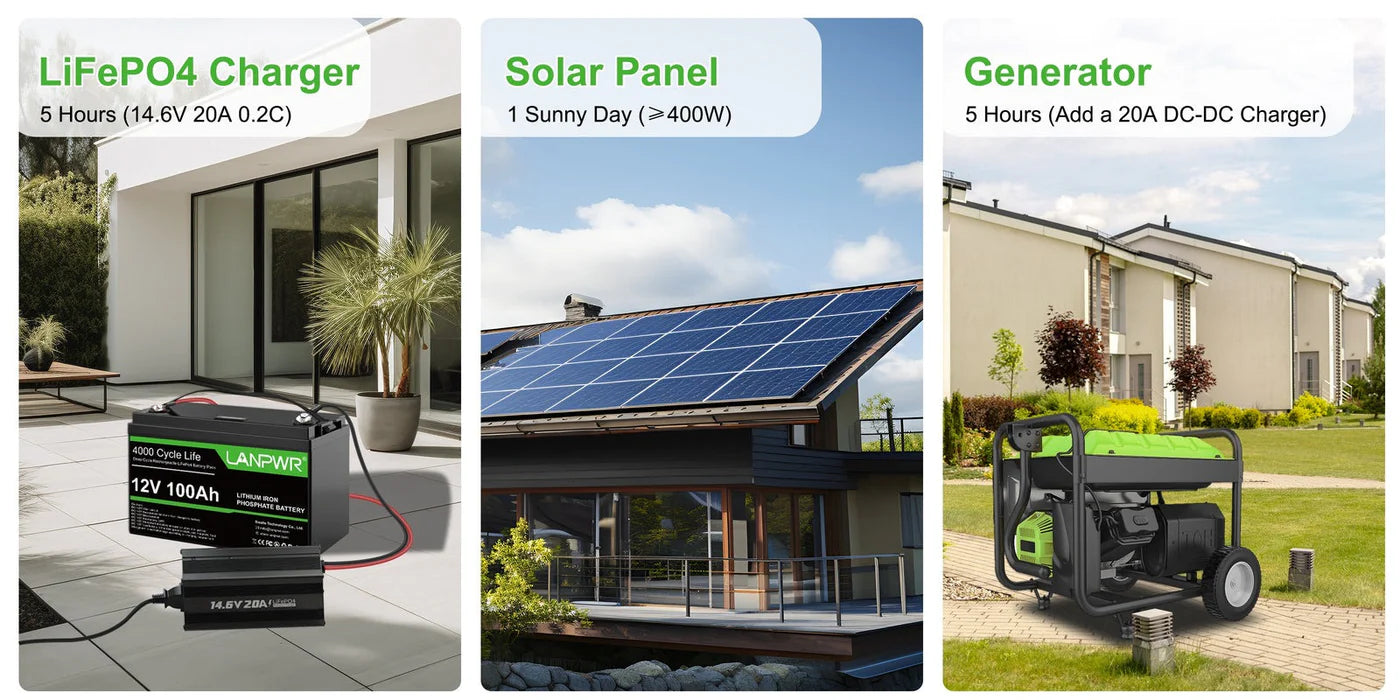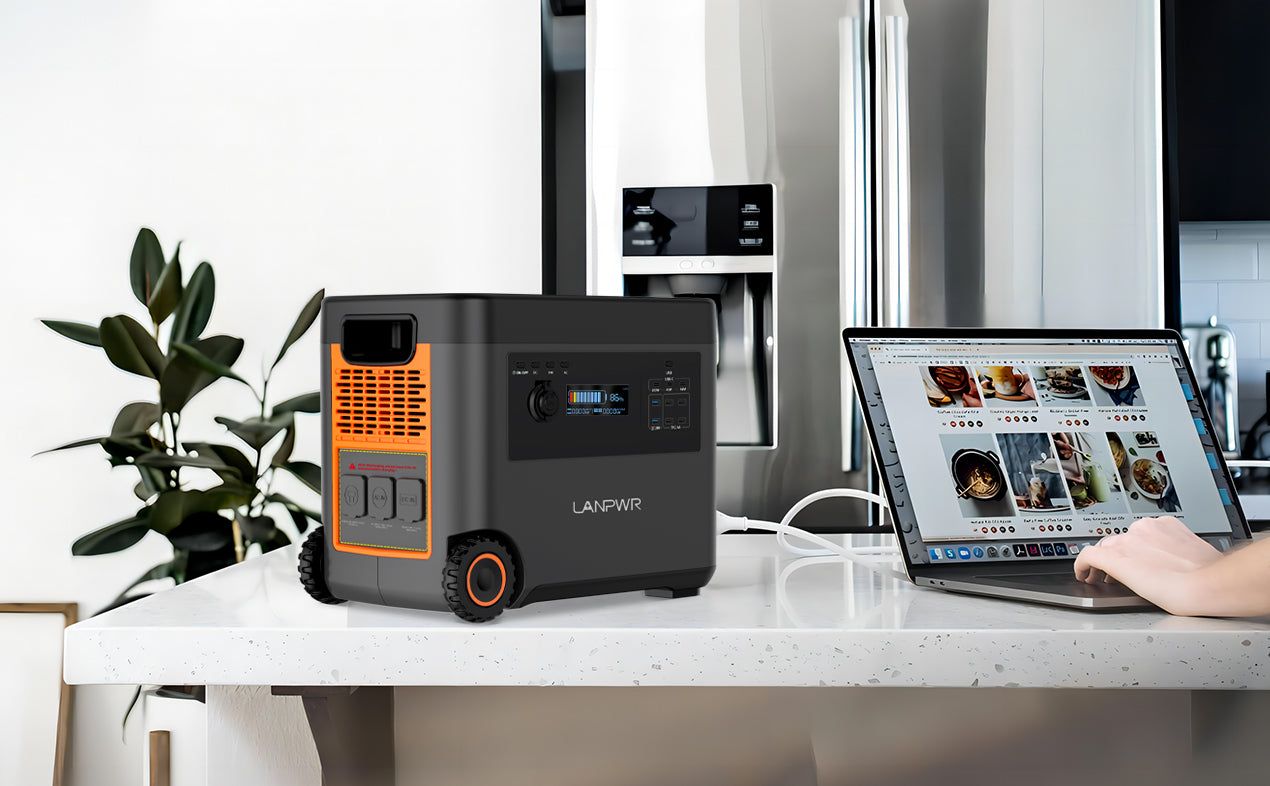
Portable power stations are small yet powerful devices that provide backup power for various electronic devices and appliances. They typically feature rechargeable batteries, AC outlets, USB ports, and even DC outputs that simultaneously charge different types of devices.
Portable power stations offer convenient solutions for powering devices on the go by converting stored battery energy to usable electricity. A portable power station's capacity, measured in watt-hours (Wh), determines its ability to supply sufficient watts - the higher this number is, the more electricity that particular station can provide.
During a power outage or needing backup power on the go, plug your devices directly into an AC outlet or USB port on a portable power station for fast charging technology that recharges devices. Some models even support fast-charging capabilities to recharge your devices quickly!
Portable power stations can be charged using various sources, including AC outlets, car chargers, portable solar panels, and gas-powered generators. Solar charging is especially suitable for outdoor adventures or off-grid living situations as it lets you harness the energy from the sun to keep devices topped up and functioning optimally.
Portable power stations offer an efficient and versatile backup power solution in various situations, from blackout powering your home during an outage to keeping devices charged during camping trips. By creating backup electricity sources in any situation, portable power stations become reliable backup solutions you can depend on to meet any unexpected power outage. How Do Portable Power Stations Operate?
Operating a portable power station involves three key stages.
Charging the Battery: Portable power stations' batteries can be charged through various sources, such as household AC outlets, car chargers, and solar panels. This provides continuous energy during travel or in areas without easy access to electricity. Their versatility in charging methods makes portable power stations particularly valuable in meeting this challenge.
Storing Energy: Once charged, electricity is stored as chemical energy in batteries. Their capacity, measured in Watt-hours (Wh), determines how much power their station can store and deliver; higher capacity units allow more devices or extended periods of operation by storing more energy.
Power Delivery: Once an electronic device is connected to a power station, stored chemical energy is converted back to electrical energy for direct delivery. Modern portable power stations include features like pure sine wave inverters to ensure safe power for sensitive electronics.
Factors to keep in mind when selecting a portable power station
It would help to remember numerous factors when purchasing a portable power station to ensure you find one suitable to meet your specific needs. Here are a few essential considerations.
- Battery Capacity and Output
Output (Wh): Watt-hour ratings on power stations indicate their capacity for storing energy; this determines how long devices powered by them can function without needing recharges or new ones altogether. When making these calculations, consider which devices need powering and for how long.
Output (W): Evaluate continuous and peak/surge power output (measured in watts). Constant power is essential when running devices continuously, while peak power draws more power at startup for devices like refrigerators or power tools.
- Battery Type
LiFePO4 Vs Lithium-ion: LiFePO4 (Lithium Iron Phosphate) batteries offer greater safety, longer lifespans, and improved stability, but they can be more costly. In comparison, traditional lithium-ion batteries generally deliver greater energy density with shorter lifecycles and increased safety risks, but they may provide higher energy density overall and lighter batteries overall.
- Portability
Size and Weight: Consider how easily transportable the power station is for camping trips or outdoor adventures—lighter models would likely prove more practical than their heavier counterparts.
Handle Design: Ergonomics can make all the difference in the transportability of heavier models.
- Charging Options
Solar Charging: Portable power stations with solar charging capabilities provide an eco-friendly means for off-grid trips or quick charging.
AC and DC Charging Methods: Flexibility in charging methods—wall outlets as well as car chargers—is critical in emergencies.
- Output Port
Variety and Quantity: Make sure the power station offers you an assortment of output ports such as USB, USB-C, AC outlets, and DC carports that meet your specific needs - more ports increase its versatility!
Regulated Outputs: Verify whether important outputs, like 12V DC outputs, are controlled to maintain consistent performance as the battery discharges.
- Safety Features
Built-In Protections
When searching for power stations to use for their devices and power supplies, look for features such as overcharge protection, over-discharge protection, short circuit protection, overtemperature protection, and so forth that provide multiple layers of safeguards that help safeguard both them and any devices they power up with the station itself. These protections could prove invaluable.
- Display and Controls
An informative display showing battery percentage, input/output wattage, and run-time remaining can help manage energy use more effectively. At the same time, user-friendly settings and controls improve user experience and functionality in a power station.
- Durability and Build Quality
Rugged Construction: Look for models built to withstand rough handling and weather-resistant environments for outdoor use. WARRANTY: A robust warranty gives peace of mind about durability and support provided to users over its lifecycle.
- Price and Brand Reputation
Cost-Efficiency: Evaluate whether the power station's price corresponds with its features and capabilities; higher-priced models often boast additional power output or enhanced safety features that could outshine cheaper units.
Brand Reliability: Look for products with positive customer reviews and established brands that often offer better reliability and support services.
Examples of Portable Power Stations
Portable power stations can serve many different functions, including camping and emergency preparedness, outdoor events, and off-grid projects. They provide reliable power sources that suit a range of purposes. Here are a few notable portable power stations of different capacities and features.
- Jackery Explorer Series Jackery Explorer 240: This battery backup solution offers 240Wh of lithium-ion capacity and features a pure sine wave inverter to power sensitive electronics safely.
Jackery Explorer 1000: This model significantly upgrades capacity and power, with a 1002Wh capacity capable of powering everything from laptops to small refrigerators.
- Goal Zero Yeti Series
Goal Zero Yeti 200X: For basic power needs such as charging phones, cameras, and laptops. A lightweight and compact option.
Goal Zero Yeti 1500X: With its 1516Wh capacity and 2000W AC inverter, this power supply offers ample juice to power large appliances or multiple charging needs during power outages or RV trips. 3. EcoFlow DELTA Series
- EcoFlow DELTA Mini: Offering portable power with 882Wh battery capacity and fast charging support.
EcoFlow DELTA Pro: This is one of the market's most powerful portable power stations. It features up to 3.6kWh expandable capacity and can even be interconnected for total home backup.
- BLUETTI Portable Power Stations
The BLUETTI EB70 has a 716Wh LiFePO4 battery capacity to ensure durability and safety, making it suitable for outdoor activities and home backup power needs.

BLUETTI AC200P: With a capacity of 2000Wh and multiple output options, these battery packs are ideal for more demanding power needs.
- Anker Powerhouse 200:
This affordable option offers a 213Wh battery capacity explicitly designed to charge smaller devices quickly while making transport convenient.
Anker Powerhouse 757 (1229Wh): With a 1229Wh capacity and an advanced battery management system, this larger model offers emergency backup power to essential home devices in case of a power outage or other catastrophic events.
- Rockpals Portable Generator With its 300W portable generator and 280Wh battery capacity, this unit makes the ideal companion on outdoor adventures. It is capable of powering multiple appliances and charging various devices at the same time.
Rockpals 500W Portable Power Station: Boasting 505Wh capacity and solar charging capabilities, it is an excellent power solution for long camping trips or an emergency backup power source.
Conclusion
To choose an efficient portable power station, consider what devices need powering, energy demands, and mobility considerations.
Individuals interested in investing in portable power stations should consider high-quality storage options like LANPWR batteries for optimal investment returns. Plenty of advice and resources are available online to assist with making informed decisions about this investment.














Leave a comment
This site is protected by hCaptcha and the hCaptcha Privacy Policy and Terms of Service apply.